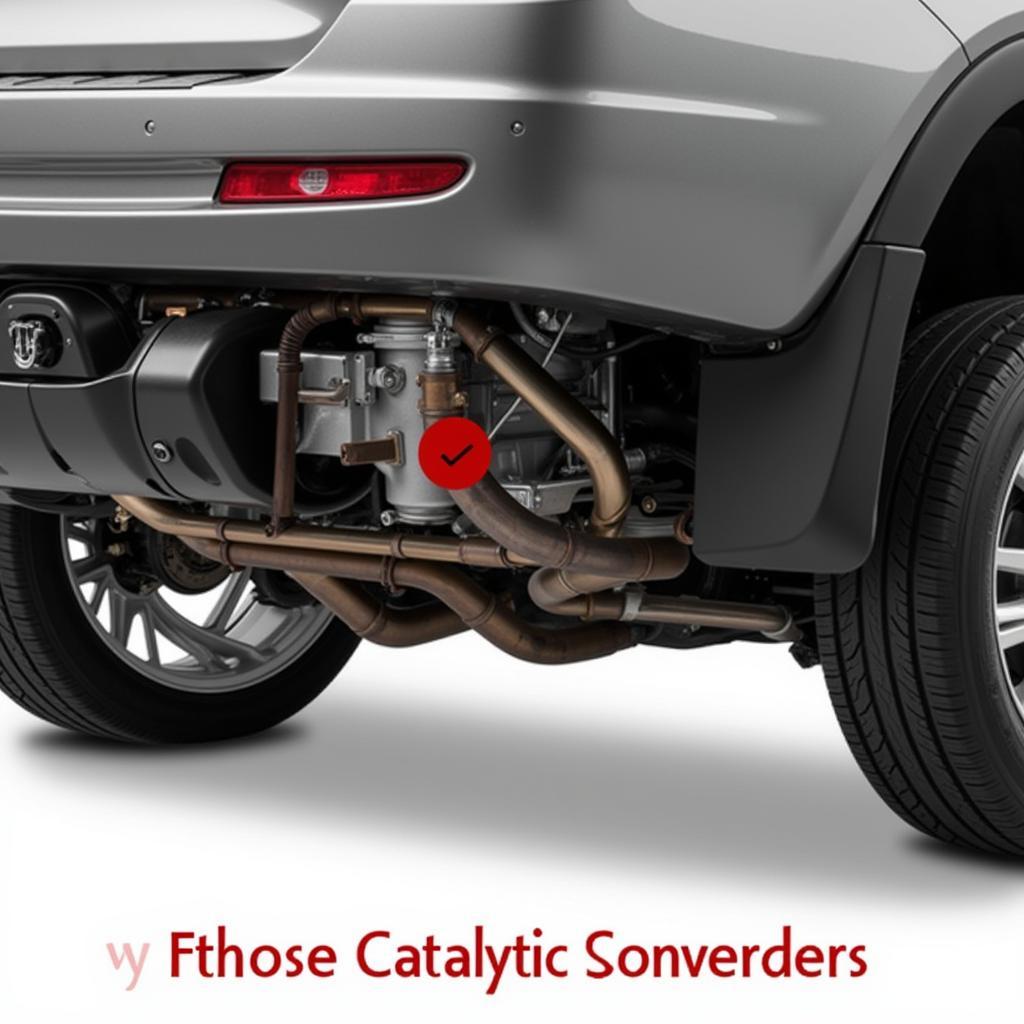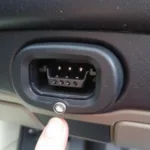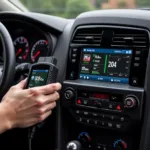Your trusty OBD2 car reader just flashed the dreaded P0420 code, leaving you feeling a mix of confusion and concern. What does it mean? Is it a quick fix or a sign of a bigger issue? Don’t worry, we’re here to decode the mystery of the P0420 code and guide you through the possible solutions.
Understanding the P0420 Code
The P0420 code, often displayed as “Catalyst System Efficiency Below Threshold (Bank 1),” indicates a problem with your vehicle’s catalytic converter. More specifically, it means the oxygen sensors before and after the catalytic converter are reporting similar readings, suggesting the converter isn’t effectively cleaning exhaust gases.
But before we dive into the solutions, let’s understand what the catalytic converter does and why it’s crucial for your car’s performance and the environment.
The Vital Role of Your Catalytic Converter
Think of your car’s catalytic converter as an environmental superhero, transforming harmful pollutants in exhaust gases into less harmful substances. Situated within the exhaust system, this component contains precious metals like platinum, palladium, and rhodium, acting as catalysts to break down dangerous gases like carbon monoxide, nitrogen oxides, and hydrocarbons.
When functioning correctly, the catalytic converter plays a significant role in reducing your car’s emissions and adhering to environmental regulations.
Common Causes of the P0420 Code
While a faulty catalytic converter might seem like the obvious culprit, the P0420 code can also be triggered by several other issues, including:
- Faulty Oxygen Sensors: Oxygen sensors, located upstream and downstream of the catalytic converter, measure the oxygen content in the exhaust stream. If these sensors malfunction and send inaccurate readings, it can trigger the P0420 code, even if the converter is fine.
- Exhaust Leaks: Leaks in the exhaust system, particularly before the catalytic converter, can disrupt the exhaust flow and oxygen readings, leading to a false P0420 code.
- Engine Misfires: When your engine misfires, unburned fuel can enter the exhaust system, overwhelming the catalytic converter and potentially damaging it over time.
- Faulty Spark Plugs: Worn or damaged spark plugs can cause incomplete combustion, leading to similar issues as engine misfires and potentially triggering the P0420 code.
- Rich Fuel Mixture: A fuel mixture with too much fuel and not enough air can also overload the catalytic converter and trigger the code.
Diagnosing the Root Cause
Accurately diagnosing the root cause of the P0420 code is crucial before attempting any repairs. Here’s a step-by-step approach:
- Check for Other Codes: Your OBD2 reader might reveal additional codes alongside the P0420, providing valuable clues about the underlying issue.
- Inspect for Exhaust Leaks: Carefully examine your exhaust system, from the engine to the tailpipe, for any visible holes, cracks, or loose connections that could indicate leaks.
- Test the Oxygen Sensors: Using a multimeter or specialized diagnostic tools, test the voltage readings of both upstream and downstream oxygen sensors. Fluctuating or out-of-range readings suggest a sensor problem.
- Check for Engine Misfires: Pay attention to any engine stumbles, hesitations, or rough idling, as these could indicate misfires.
- Inspect Spark Plugs: Remove and inspect your spark plugs for wear, damage, or fouling.
Addressing the P0420 Code: Your Options
Once you’ve pinpointed the cause of the P0420 code, here are the potential solutions:
- Replace Faulty Oxygen Sensors: If testing reveals faulty oxygen sensors, replacing them is a relatively straightforward and affordable fix.
- Repair Exhaust Leaks: Depending on the leak’s severity and location, repair might involve tightening loose connections, patching holes, or replacing damaged sections of the exhaust system.
- Address Engine Misfires: Resolving engine misfires typically involves diagnosing and fixing issues related to spark plugs, ignition coils, fuel injectors, or other engine components.
- Replace Spark Plugs: If your spark plugs are worn or damaged, replacing them is a crucial maintenance step that can prevent various engine problems, including those contributing to the P0420 code.
- Adjust Fuel Mixture: Diagnosing and adjusting the fuel mixture typically requires professional help using specialized diagnostic tools.
- Replace Catalytic Converter: If the catalytic converter itself is faulty or damaged, replacement becomes the necessary solution. However, it’s usually the last resort due to the significant cost of catalytic converters.
Don’t Ignore the P0420 Code
While a P0420 code might not render your car undrivable immediately, ignoring it can lead to more severe problems and costly repairs down the road. Prompt diagnosis and addressing the underlying issue are crucial to ensure optimal engine performance, fuel efficiency, and compliance with environmental regulations.
Frequently Asked Questions
Q: Can I drive my car with a P0420 code?
A: While you might be able to drive for a short period, it’s not advisable. Ignoring the P0420 code can lead to further damage to your catalytic converter and other engine components, potentially resulting in costlier repairs.
Q: How long does it take to fix a P0420 code?
A: The repair time depends on the underlying cause. Replacing oxygen sensors or spark plugs could take a couple of hours, while addressing engine misfires or replacing a catalytic converter might require more extensive work.
Q: How much does it cost to fix a P0420 code?
A: The repair cost varies greatly depending on the root cause. Replacing oxygen sensors or spark plugs is relatively inexpensive, while replacing a catalytic converter can be a significant expense.
Need Further Assistance?
If you need help diagnosing or fixing the P0420 code, don’t hesitate to reach out to our team of automotive experts. We’re available 24/7 via WhatsApp at +1(641)206-8880 or email at [email protected]. Our dedicated customer support team is always ready to assist you with any car diagnostic needs.


